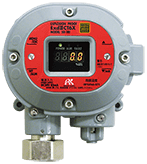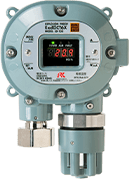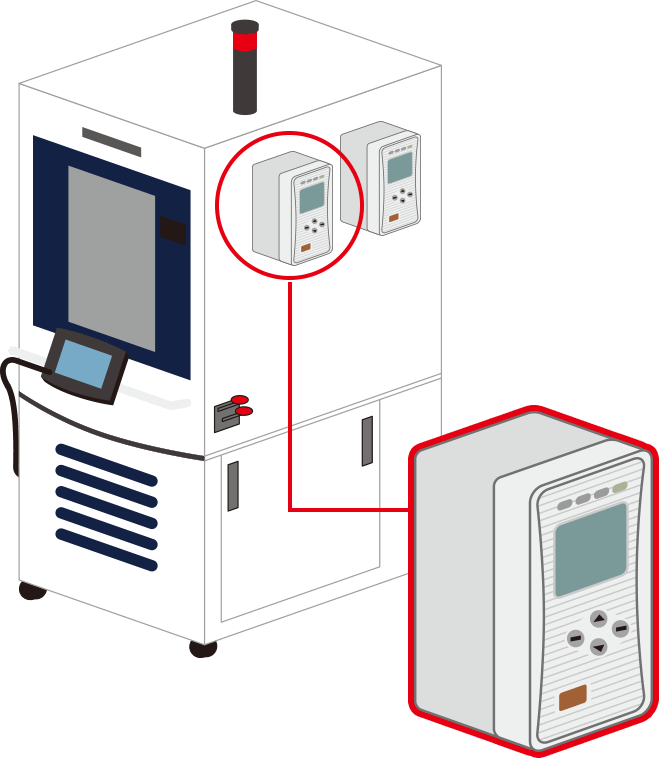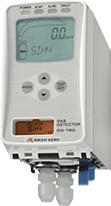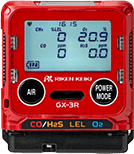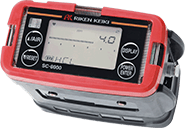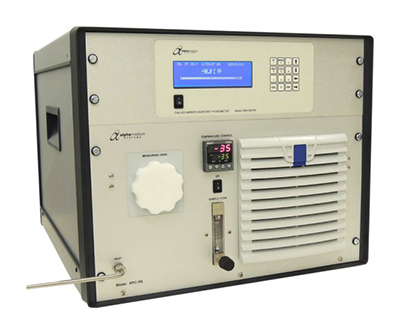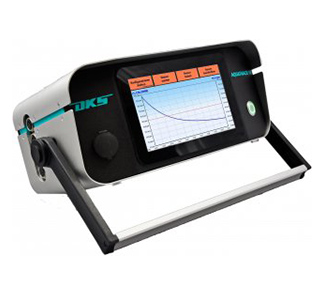Moisture Wiki | Humidity measurement in gases | Residual Moisture Determination
Acid gases
Acid gases
Acid gases are generally gases which, when combined with water, form an acid. These gases are usually very caustic, corrosive and toxic to highly toxic. Such gases can be of natural origin, but can also arise in chemical processes as desired and undesired reaction gases. With our AQUATRACE® device series, we can determine the residual moisture in almost all gases (except NH3).
Absolute humidity
Absolute humidity
Absolute humidity is also called water vapor density and describes the mass of water vapor in a certain volume of air (g/m³).
Li-Ion Battery cell production
Focused solutions for all aspects of lithium-ion battery manufacturing
Riken Keiki has been involved in the research and manufacture of lithium-ion batteries since the early stages of development. More than 10,000 units are in use at the production sites for lithium-ion batteries worldwide. RIKEN KEIKI continues to improve the safety of lithium-ion battery production through continuous improvement and integrates customers' needs into its products.
Gas monitoring for coating and drying processes
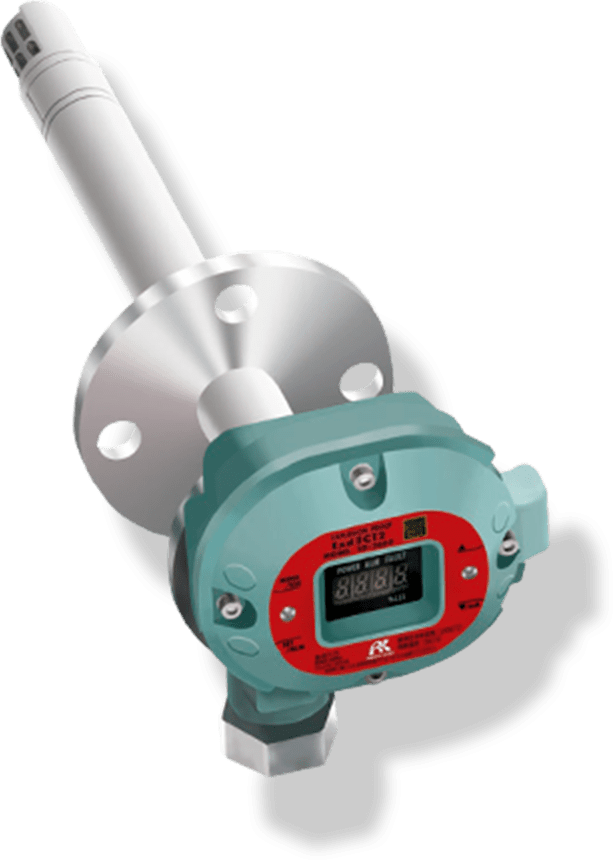

Highly heat-resistant in-line measurement.
Withstand operating temperatures up to 200 °C.
Ideal for coating and drying processes.

Measure the gas concentration exactly in the center of the exhaust duct.
The design with inline sensor (250 mm) allows conventional diffusion on the sensor without an additional pump.


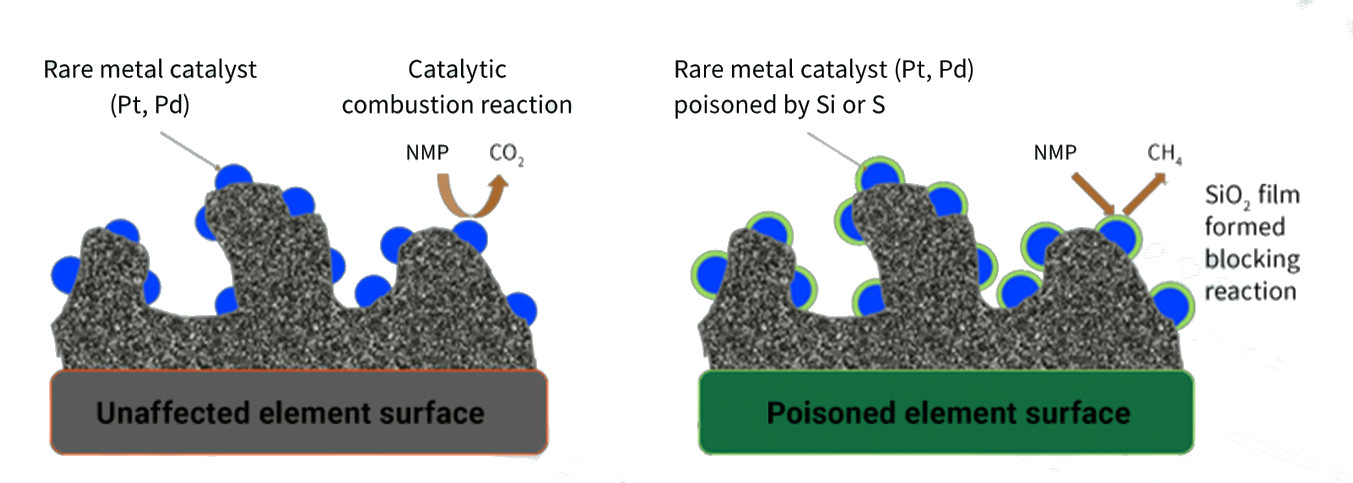
Silicon contamination
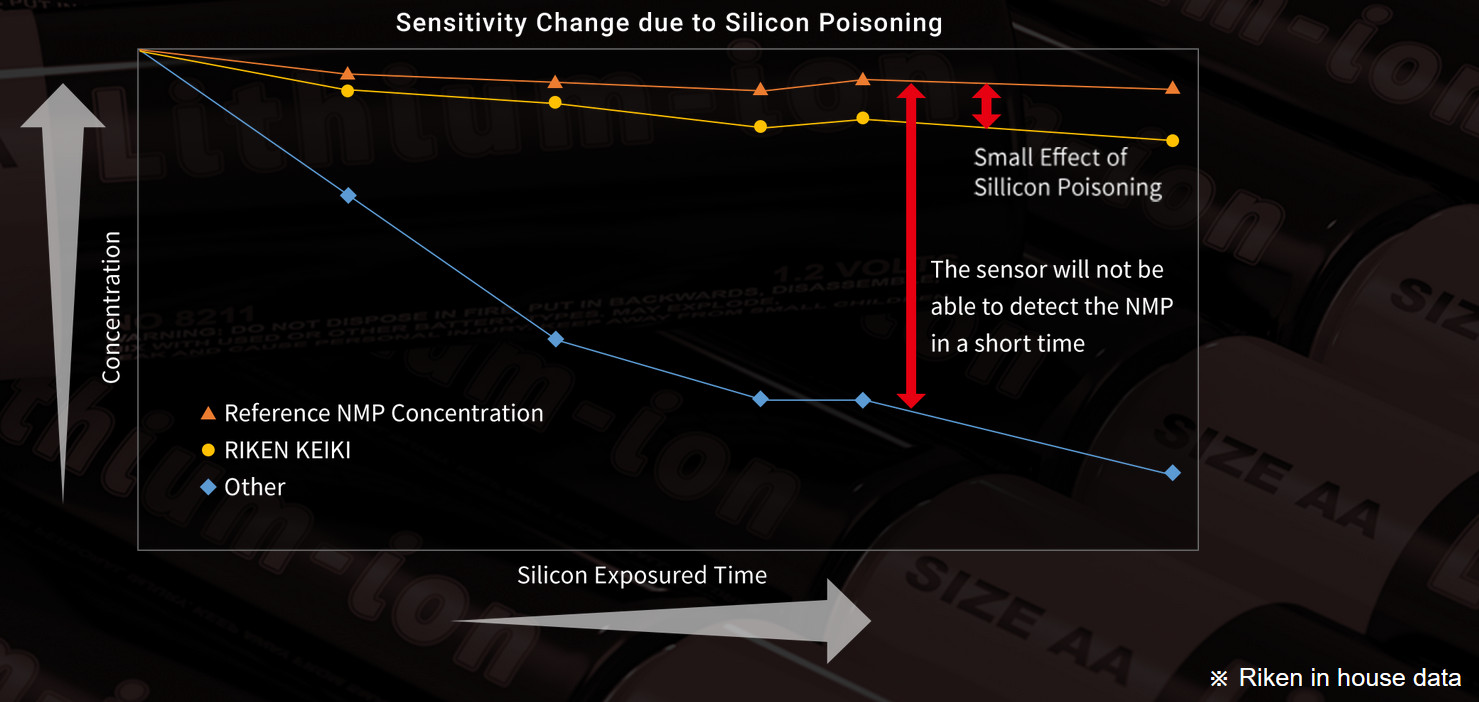
Ethanol is widely used as a calibration gas, which is relatively easy to obtain and handle. However, since ethanol has a low molecular weight, it will react with a "silicon-contaminated, damaged sensor". RIKEN KEIKI managed to suppress the deterioration to display the exact NMP gas concentration using a sensor calibrated to ethanol.
Device comparison to the Monitoring of combustible gases

Importance of gas detection
______
Why is it important to detect gases in the production of lithium-ion batteries?
In the production of lithium-ion batteries, gases are used or generated in processes that can be flammable or toxic. Exceeding the allowable concentrations of these gases may pose a hazard to your personnel and equipment. Protect your employees and property by installing gas detectors designed for lithium-ion manufacturing applications.
Lithium-ion battery manufacturing process:
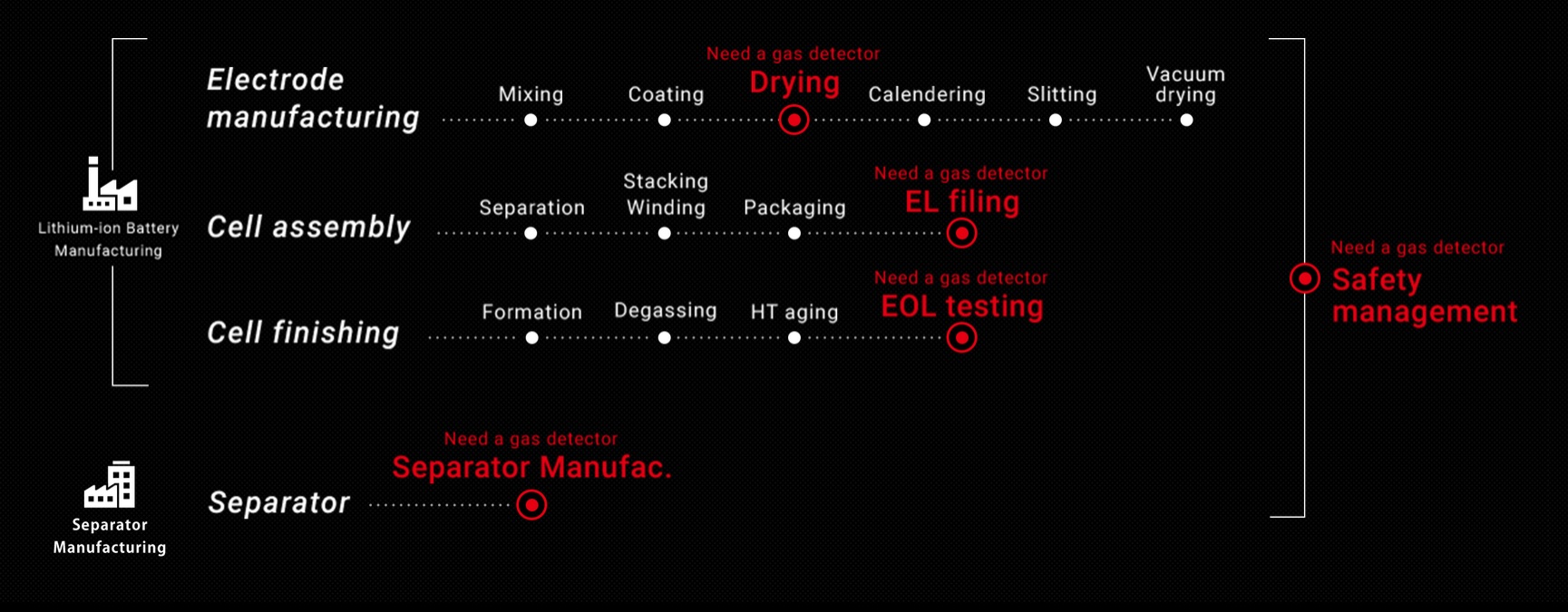
Electrode production - drying process
______
In the manufacture of electrodes for lithium-ion batteries, NMP is used as a solvent. NMP only evaporates at high temperatures during the drying process. As the NMP concentration increases, the risk of explosion increases. An ideal place for detecting NMP is the exhaust duct. By inserting the probe directly into the exhaust duct, NMP is detected in the middle of the duct and can withstand high temperatures and high concentrations.
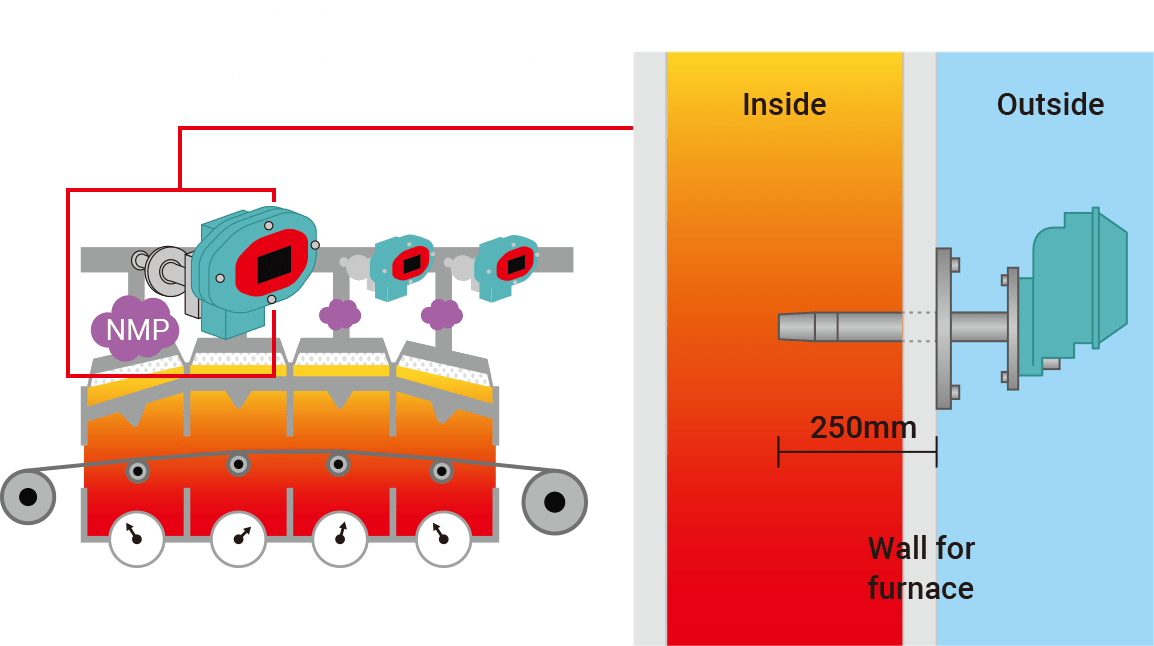
RIKEN KEIKI products for drying processes
______

GD-A2400
Ex-proof
0°C ~ +160°C

SD-2500
Concentration display
Ex-Proof
0°C ~ +160°C

SD-2600
Concentration display
Ex-Proof
0°C ~ +260°C

SD-2700
Ex-proof
0°C ~ +250°C
Battery cell construction - electrolyte filling process
______

Gas detectors for electrolyte filling processes
______
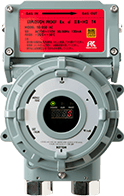
SD-D58 (HW sensor)
Concentration indicator
Pump unit
Ex-proof
Cell Testing Process
______
Every lithium-ion battery must pass a test. During the evaluation test, flammable and toxic gases can be produced from the battery. Gas concentration monitoring is essential to prevent ignition and poisoning accidents during the testing process. When the gas detector detects the target gas, outside air must be sucked in from the inlet/outlet damper to reduce the gas concentration in the test equipment.
Gas detectors for the test process
______
GD-70D
Concentration indicator
Interchangeable sensor modules
Pump unit
Standard G1/4" screw-in connections
Manufacturing process for separators
______

Gas monitors for separator production processes
______
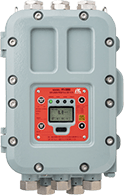
FI-900
Concentration display
Need external sampling unit
Ex-proof
Electrode Fabrication - Portable Gas Detectors for Personal Protection
______

s
Portable gas detectors
______
GADMS Lite
remote monitoring system
______

In addition to gas detectors, RIKEN KEIKI's original "GADMS Lite" system is also available for access to remote monitoring, configuration and alarm history via a PC, tablet or smartphone.

Biogas / fermentation gas
Biogas / fermentation gas
Fermentation gas or biogas is produced during the fermentation of all types of biomass. Biogas is a very moist mixed gas, consisting of CH4, CO2, N2, O2, H2S, H2 and NH3 and therefore consists of flammable and non-flammable components . The gas can be used to generate electrical energy, to operate vehicles or to feed into a gas supply network. In order to get natural gas quality for consumers, energy-intensive gas processing must take place in order to remove dust, water vapor and various trace elements as far as possible.
Chlorine gas Cl | Hydrogen chloride HCl
Chlorine gas Cl | Hydrogen chloride HCl
Dew point transmitters that work on the basis of aluminum oxide are extremely sensitive to corrosive components in the gas. Chlorine gas and other acidic gases irreversibly damage the sensors in a very short time. In the presence of water, acids are formed which destroy the structures of the small Al2O3-based sensor element. Our AQUATRACE® sensors have been used successfully, reliably and with long-term stability in chemical companies for years.
Coulometric humidity sensor
Coulometric humidity sensor
It is an absolute measurement method because phosphorus pentoxide (P2O5) reacts 100% selectively to water. There are no cross-sensitivities. In addition to the very fast response time from dry to moist, the main advantages of the AQUATRACE® trace moisture sensors are their robustness and their ability to easily tolerate corrosive components in gases (Cl2, HCl, F2 HF). In addition, there is no drift behavior by the sensor. The sensor element can be easily regenerated by the plant operator. The lower detection limit of the AQUATRACE® -sensors is 0.001 ppmV ( parts per million ) or 1 ppbV ( parts per billion ).
Phosphorus pentoxide (P2O5) has a high affinity to absorb water in order to convert it into tetrametaphosphoric acid. It is an extremely hygroscopic salt. This property makes it ideal for building a moisture-sensitive sensor. The process goes back to the KEIDEL measuring cell developed in 1956. In contrast to the KEIDEL measuring cell, the sensitive layer of our AQUATRACE® sensor is applied on the outside. A decomposition voltage greater than 2V is present at two Pt-electrodes, which electrolyzes the metaphosphoric acid. This releases hydrogen and oxygen and the phosphorus pentoxide is again available for the absorption of water molecules. The P2O5 thus acts as a catalyst for the electrolysis of water molecules. The thus resulting hydrogen and oxygen are removed from the system by the gas flow. The measured decomposition current IM is a direct measure of the moisture according to Faraday's law. The volume flow must be kept constant for a precise measurement.
The method is not suitable for moisture determination in NH3 (ammonia).
Image: Coulometric Moisture Sensor - Development by DKS GmbH
Dew point mirror hygrometer
Dew point mirror hygrometer
The measurement method is based on a mirror, which is cooled slowly and in a controlled manner until condensation can be detected on this. The water vapor partial pressure at the dew point of the flowing gas is given by the value on the vapor pressure curve. The measurement process is very complex and time-consuming. A careful measurement assumes that equilibrium conditions are reached. This can only be achieved by approaching the dew point approximately with the temperature regime and repeating it several times. With appropriate effort, an accuracy of +/- 0.1 ° C can be achieved. A major advantage over all other measurement methods that have been presented here is that there is a direct reference to thermodynamic data and this measurement method can be used as a reference measurement method. Disadvantages of the method are clearly the time required, as well as the size of the measuring equipment and the purchase price. We use the chilled mirror as a test tool for our AQUATRACE® P2O5 sensors.
Dew point temperature
Dew point temperature
For air, the dew point or the dew point temperature describes a temperature point that must be fallen below at a certain relative humidity and constant pressure so that the water contained in the gas condenses. At this point the relative humidity is 100%, i.e. the air is saturated with water vapor. Warm air can absorb more water vapor, so the dew point is higher. The opposite is true in cold air. We notice this in the warm summer months and vice versa in the cold winter months.
Forming gases
Forming gases
Forming gases such as H2 in N2 should generate reactions. Forming gases have a reducing effect on metal oxides and thus prevent oxidation. In industry they are used as a protective gas in the heat treatment of metals (welding, soldering, rolling, etc.).
Glove boxes
Glove boxes
Glove boxes are used for work under protective gas. Wherever materials have to be protected from environmental influences or the environment has to be protected from the harmful effects of certain substances, glove boxes are used for both production and research. The classic case for the use of glove boxes is when substances or products that are sensitive to oxidation are to be treated or processed. This is usually done by creating an argon or nitrogen atmosphere. To ensure that this atmosphere meets the requirements for purity, it is necessary to continuously monitor the protective gas regime in the box for its remaining moisture and oxygen impurities. The data can be output via the available interfaces (RS232, TTL, 4 - 20mA, 0-10V) and integrated into the control of the glove box. This gives the customer an overview of the conditions under which a test or production cycle is being carried out. These interfaces can be configured according to customer requirements. Our transmitter can also be used as a replacement for old, outdated sensors and can be integrated into the existing control system. You can regenerate all AQUATRACE® sensors yourself. This means that there are almost no follow-up costs when using our sensors. We can make all flange variants possible. Standard is KF25 and KF40.
Image: Glovebox
Hydrogen chloride [HCl]
Measure and analyze hydrogen chloride, [HCl]
Synonyms: hydrochloric acid anhydrous, hydrogen chloride, hydrochloric acid gas, hydrogen chloride, chlorane, CAS No .: 7647-01-0
Short description:
Colorless, pungent smelling and poisonous gas.
Safety instructions:

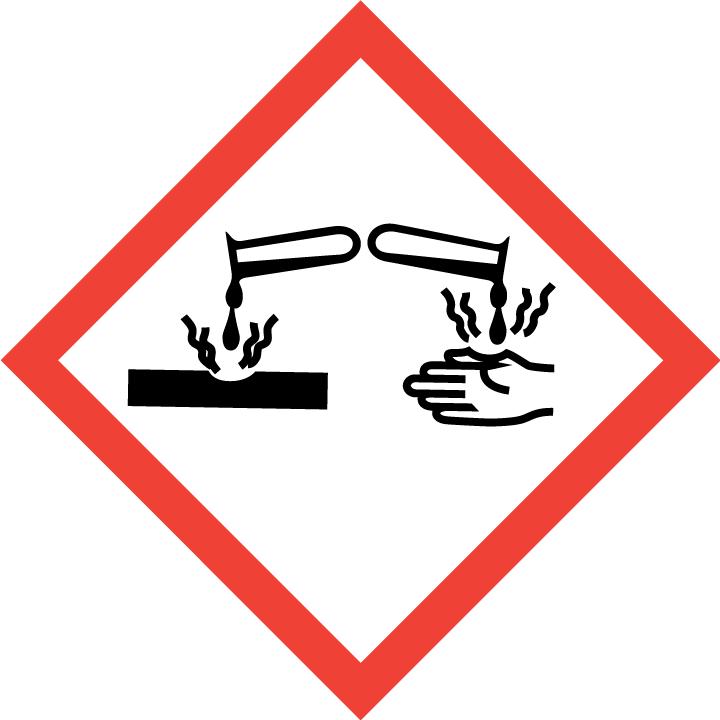

GHS hazard labeling from Regulation (EC) No. 1272/2008 (CLP):
Suitable products for hydrogen chloride:
Gas measurement
Trace moisture in gas
For hydrogen chloride, we have a large number of solutions for the measurement of various parameters that are relevant in your process. Simply speak to us and / or use our contact form. Together we will find the best solution for you.
Hydrogen [H]
Measure and analyze molecular hydrogen [H2]
Short description:
Colorless, odorless and flammable gas.
Safety instructions:


GHS hazard labeling from Regulation (EC) No. 1272/2008 (CLP):
Suitable products for hydrogen:
Gas measurement
Trace moisture in gas
For molecular hydrogen, we have a large number of solutions for the measurement of various parameters that are relevant in your process. Simply speak to us and / or use our contact form. Together we will find the best solution for you.
Inert gases
Inert gases
Reactions are to be prevented by inert gases such as argon or nitrogen. These gases are often used for explosion protection in industrial plants. Further examples of inert gases: carbon dioxide, helium, neon, xenon, krypton, radon
Leak test - helium leak test
Leak test - helium leak test
In the helium leak test, the part to be checked is flooded with the light inert gas helium. A vacuum is created around the test item. A helium detector detects the lowest concentrations of helium, which could escape through the smallest microscopic cracks on the test part, for example.
Magnus formula
Magnus formula
One approach to moisture measurement is to determine the temperature at which the saturation vapor pressure of water vapor, e.g. is reached over ice. The Magnus formula was derived from a German physicist and chemist named Heinrich Gustav Magnus, which describes the physical point, the liquid, solid and gaseous state of aggregation of a substance are in equilibrium.
Ei(t) = E0 * exp ((22,46 * t) / (272,62°C + t))
Ei(t) … Saturation vapor pressure as a function of temperature
t … is the dew point DP in°C -65°C = t = 0,01°C
E0 … 6,112 hPa
NDIR photometry
IR photometry
Broadband radiation sources are used in NDIR photometry. Specific spectral ranges are absorbed from the broadband spectrum of the radiation source. The measuring detector behind the measuring cuvette contains at least two separate channels. In the simplest structure, the measuring channel has only placed an interference filter in front of the detector and thus measures a specific radiation absorption. No absorption takes place in the reference detector. This only has an interference filter in front of the detector with a pass range of approx. 4 µm. The gas concentration in the measuring cuvette can then be calculated from these two signals. It is also possible to place several measuring channels behind the measuring cuvette, e.g. to record 3 components simultaneously.

Image source: witec-sensorik.de
We can detect the following gases with NDIR:
- Carbon monoxide CO
- Carbon dioxide CO2
- Methane CH4
- Ethane C2H6
- Propane C3H8
- Butane C4H10
- Sulfur hexafluoride SF6
- Nitrous oxide N2O
NDUV photometry
UV photometry
is based on the absorption of radiation in the spectrum between 200nm and 400nm. For some important technical gases this area has a pronounced absorption band. With this measuring method, the measurement is not disturbed by water vapor and carbon dioxide. There is also a high level of absorption. This means that even very low gas concentrations in the low ppm range can be reliably detected. In the Wi.Tec photometers we use, UV light-emitting diodes are preferably used, the emission wavelengths of which correspond to the respective absorption band spectrally. This means that no additional optical spectrometers or filter elements are required. This type of UV photometry is therefore also known as the non-dispersive UV method, or NDUV for short.

Image source: witec-sensorik.de
The following gases can be measured:
- Hydrogen sulfide H2S
- Carbon disulfide CS2
- Sulfur dioxide SO2
- Nitrogen dioxide NO2
- Chlorine Cl2
- Ozone O3
- Chlorine dioxide ClO2
Measure nitrogen oxides [NO, NO2, NOx]
Measure and analyze nitrogen oxides [NO, NO2, NOx]
Short description:
NOx behave as an acid generator in connection with water. For this reason alone, they are irritating and toxic (except for nitrous oxide). Nitrogen oxides have thus achieved environmental relevance.
| Summenformel | Bezeichnung |
| N4O | nitrosyl azide |
| N2O | nitrous oxide |
| N4O2 | nitryl azide |
| NO | nitric oxide |
| N2O3 | nitrous oxide |
| N4O6 | trinitramide |
| NO2 | nitrogen dioxide |
| N2O4 | nitrous tetroxide |
| N2O5 | Nitrous pentoxide |
Suitable products for the detection of nitrogen oxides:
Gas measurement
Trace moisture in gas
For nitrogen oxides, we have special portable or stationary gas warning devices for trace and percentage detection. Simply speak to us and / or use our contact form. Together we will find the best solution for you.
Measure hydrogen sulfide [H2S]
Measure and analyze hydrogen sulfide [H2S]
Synonyms: hydrogen sulfide, dihydrogen sulfide, sulfane, CAS No .: 7783-06-4
Short description:
Extremely toxic, colorless gas. that smells like rotten eggs.
Safety instructions:



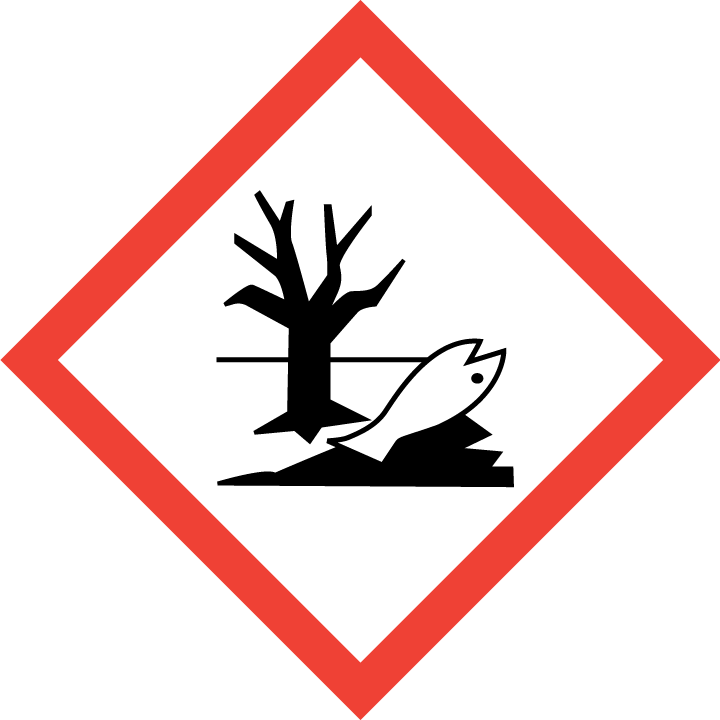
GHS hazard labeling from Regulation (EC) No. 1272/2008 (CLP):
Suitable products for hydrogen sulfide:
Gas measurement
Trace moisture in gas
For hydrogen sulfide, we have a large number of solutions for the measurement of various parameters that are relevant in your process. Simply speak to us and / or use our contact form. Together we will find the best solution for you.
Metal Oxide Dew Point Sensors
Metal Oxide Dew Point Sensors
AL2O3 sensors are most often used here. AL2O3 sensors are most often used here. Due to its interactions with water, the oxide is considered a sensitive layer and is used for humidity sensors. The water is deposited on the surface of the metal oxide. The sensor has a two-layer structure. The base electrode is made of aluminum on which the porous oxide layer is applied. One could best compare the sensor with a capacitor. A thin layer of gold that is permeable to water vapor is applied to the counter electrode. The sensitive layer must be as large as possible in order to be able to have a high level of sensitivity. The water vapor gets through the gold layer into the pores of the sensitive layer and is deposited. Chemical sorption separates the water molecules on the surface to form a hydroxyl group. Van der Waals forces can now bind further water molecules to the hydroxyl groups. The bound water molecules are now in equilibrium with the surrounding air humidity and influence the capacity and thus in turn the conductivity of the "capacitor". A measured value is then obtained through a comparatively simple impedance measurement. There is a good correlation to the absolute humidity. The aging effects of the sensitive layer require regular calibration, which cannot be carried out by the end customer. The process is also not suitable for aggressive gases.
Methane [CH4]
Measure and analyze methane [CH4]
Synonyms: Methyl Hydrogen, Carban, R-50, CAS No .: 7446-09-5
Short description:
Colorless and odorless, flammable gas.
Safety instructions:


GHS hazard labeling from Regulation (EC) No. 1272/2008 (CLP):
Suitable products for methane:
Gas measurement
Trace moisture in gas
For methane, we have a large number of solutions for the measurement of various parameters that are relevant in your process. Simply speak to us and / or use our contact form. Together we will find the best solution for you.
Natural gas
Natural gas
Natural gas is a naturally occurring, flammable gas mixture, which mainly consists of methane. In most cases, the raw gas needs to be processed in order to extract toxic, corrosive or non-combustible components. In addition, natural gas must be dehumidified. In everyday language, the term natural gas means the ready-to-use medium.
Oxygen [O2]
Measure and analyze oxygen [O2]
Short description:
Colorless, odorless and oxidizing gas. CAS No.: 7782-44-7
Safety instructions:

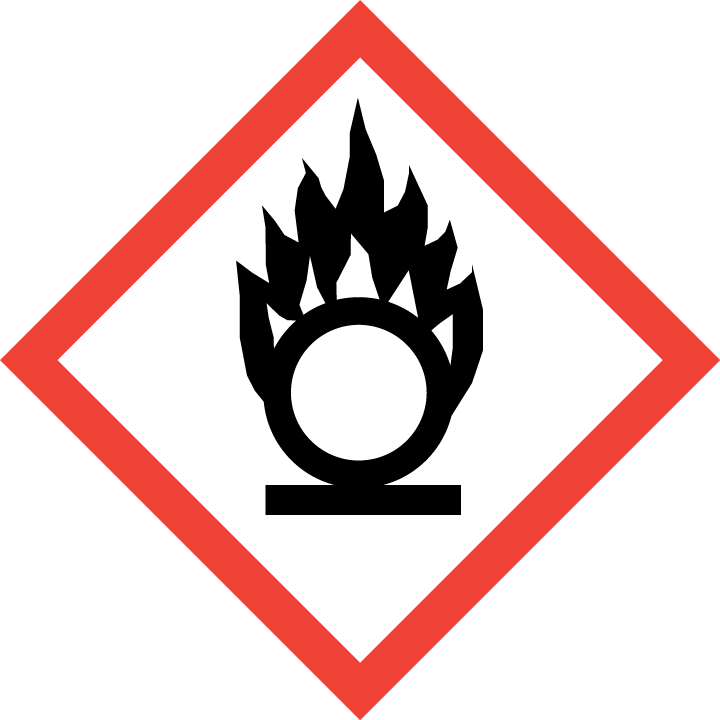
GHS hazard labeling from Regulation (EC) No. 1272/2008 (CLP):
Suitable products for oxygen:
Gas measurement technology
Trace moisture measurement
4-parameter oxygen analyzer (different variants can be configured)
For molecular oxygen, we have a large number of solutions for the measurement of various parameters that are relevant in your process. Simply speak to us and / or use our contact form. Together we will find the best solution for you.
Partial pressure gradient
Partial pressure gradient
It is a partial pressure of a certain gas in a gas mixture. The gas components in a system with different pressure gradients always strive to compensate. Dalton's law, which was formulated by John Dalton in 1805, states that the sum of all partial pressures in ideal gases is equal to the total pressure of the gas mixture.
Water vapor, also behaves like an ideal gas, so Dalton's law reads:
ptotal = pN2 + pO2 + pAr + ...+ eH2O = ptL + eH2O,
in which eH2O ... Water vapor partial pressure and pda ... Partial pressure of dry air
Parts per billion (ppbV)
Parts per billion (ppbV)
Volume mixing ratio 10-9 = 1 billionth = 1 ppbV (part per billion)
For example 1000 ppbV H2O in N2 = 1 µl H2O per liter nitrogen.
Pentafluoroethane [C2HF5]
Measure and analyze pentafluoroethane, [C2HF5]
Synonyms: R-125, CAS No .: 354-33-6
Short description:
Colorless gas with a faint ethereal odor. Non-flammable. Used as a refrigerant and extinguishing agent.
Safety instructions:

GHS hazard labeling from Regulation (EC) No. 1272/2008 (CLP):
Suitable products for Pentafluoroethane:
Gas measurement
Trace moisture in gas
For pentafluoroethane, we have a large number of solutions for the measurement of various parameters that are relevant in your process. Simply speak to us and / or use our contact form. Together we will find the best solution for you.
Relative humidity
Relative humidity
The proportion of water in our normal ambient air is generally given as relative humidity. Relative because it describes the percentage relationship between the instantaneous vapor pressure of the water and the saturation vapor pressure of the water on a clean and flat water surface at a given temperature. It indicates the degree to which the air is saturated with water vapor.
P2O5 /Phosphorus pentoxide
Phosphorus pentoxide
Phosphorus pentoxide is a chemical compound with the empirical formula P4O10, where the common name comes from the empirical formula P2O5 is derived. This white crystalline solid is the anhydride of phosphoric acid. It is a powerful drying and dehydrating agent.
Phosphorus pentoxide crystallizes in at least four variants. The best known includes molecules of P4O10. Weak van der Waals forces hold these molecules together in a hexagonal lattice. The structure of the P4O10 cage is reminiscent of adamantane with a Td symmetry point group. It is closely related to the corresponding phosphoric anhydride P4O6. The latter lacks terminal oxo groups. Its density is 2.30 g/cm³. It boils at 423 ° C under atmospheric pressure. When heated faster, it can sublime. This shape can be made by rapidly condensing the phosphorus pentoxide vapor. The result is an extremely hygroscopic solid.

Image: Structural formula phosphorus pentoxide
Packaging gases
Packaging gases
Packaging gases are used in food production to prevent putrefaction in packaged foods. Oxygen, nitrogen and carbon dioxide are mainly used here.
Parts per million (ppmV)
Parts per million (ppmV)
Volume mixing ratio 10-6 = 1 millionth = 1 ppmV (part per million)
For example 1 ppmV H2O in N2 = 1 µl H2O per liter nitrogen.
Parts per trillion (pptV)
Parts per trillion (pptV)
Volume mixing ratio 10-12 = 1 trillionth = 1 pptV (part per trillion)
For example 1000 pptV H2O in N2 = 0,001µl H2O per liter nitrogen.
Phosgene, [COCl2]
Measure and analyze phosgene, [COCl2]
Synonyms: carbonyl chloride, carbonic acid dichloride, carbon oxychloride, CAS-No .: 75-44-5
Short description:
Phosgene is a colorless gas. Highly diluted it smells lightly sweet, concentrated it have a unpleasant putrid-sweetish odor.
Safety instructions:



GHS hazard labeling from Regulation (EC) No. 1272/2008 (CLP):
Suitable products for phosgene:
Gas measurement
Trace moisture in gas
For phosgene we have portable and stationary gas measuring devices for the ppm- and% range. Simply speak to us and / or use our contact form. Together we will find the best solution for you.
Pressure dew point
Pressure dew point
Please see also dew point temperature. The pressure dew point is a temperature and refers to a pressurized gas (e.g. compressed air) with a certain pressure above or below normal pressure.
Quartz crystal sensors - QCM
Quartz crystal sensors - QCM
Here an oscillating quartz is coated with a polymer that is sensitive to moisture. Moisture accumulates on this layer. The changed mass changes the resonance frequency of the quartz. These minor changes can be registered with great effort. This even works down to the ppb range. In order to achieve this, the temperature must be regulated very precisely, as the basic frequency is significantly influenced by the temperature. There are of course significant cross-sensitivities to all soiling that can be deposited on the polymer layer. A high degree of purity of the medium must therefore be assumed.
Sulfur dioxide [SO2]
Measure and analyze sulfur dioxide [SO2]
Synonyms: sulfur (IV) oxide, sulfurous acid anhydride, E 220, CAS no .: 7446-09-5
Short description:
Pungent smelling, colorless and poisonous gas.
Safety instructions:



GHS hazard labeling from Regulation (EC) No. 1272/2008 (CLP):
Suitable products for sulfur dioxide:
Gas measurement
Trace moisture in gas
For sulfur dioxide, we have a large number of solutions for the measurement of various parameters that are relevant in your process. Simply speak to us and / or use our contact form. Together we will find the best solution for you.
TDLS / TDLAS - laser spectroscopy
TDLS / TDLAS - Tunable diode laser
For our CombiSens Analyzer Series we use, Axetris TDLS benches for gas measurements. A 0.05 nm narrow-band diode laser scans an absorption band of the target gas and carries out a high-resolution near-infrared absorption measurement. The electronic evaluation enables the separation of the gas absorption information from the electro-optical system information, resulting in a detection method that eliminates the need for a physical reference channel and provides continuous sensor status monitoring. Thus, the LGDs from Axetris represent a clear alternative to other detection solutions and combine precise, non-contact optical measurements with high target gas selectivity, calibration-free operation, low operating costs and simple OEM integration.
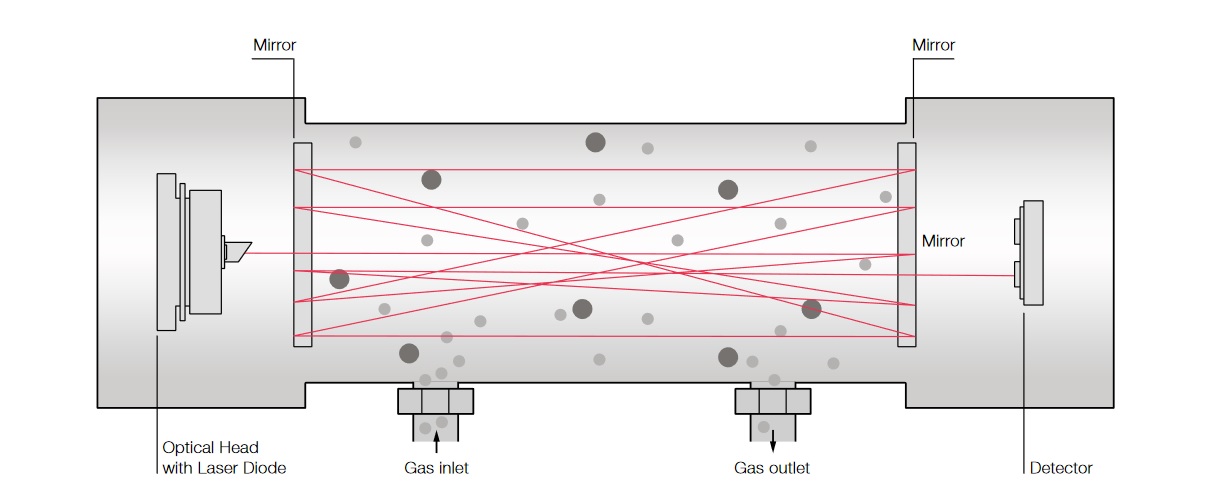
Image source: axetris.com
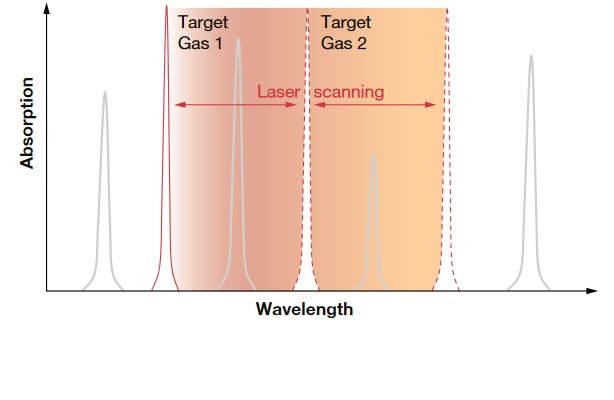
Image source: axetris.com
Technology highlights
- Optical, non-contact, precise laser measurement
- High target gas selectivity
- Measurement of up to two gases at the same time
- Fast reaction time
- Standalone, easy to integrate
- Continuous monitoring of the sensor status
- Low operating costs
- Option hot gas measurement up to 220 ° C
- Compact solution for portable measurements
Applications
- Process control: SCR in power generation & engine development, carbonitriding of steel, agriculture
- Environment: Continuous emissions monitoring (CEM), biogas, volatile emissions, natural gas, leak detection
- Medical: Breathing gas analysis - gas detection in medical diagnostics
- Research: climate control, environmental studies
Trace moisture, residual moisture, residual H2O
Trace moisture
Small amounts of moisture (<1%) are referred to as trace moisture, residual moisture or moisture traces, which are expressed in ppmV (parts per million), ppbV (parts per billion) or pptV (parts per trillion).
Image: Trace moisture analyzer AQUATRACE® IV - portable device


